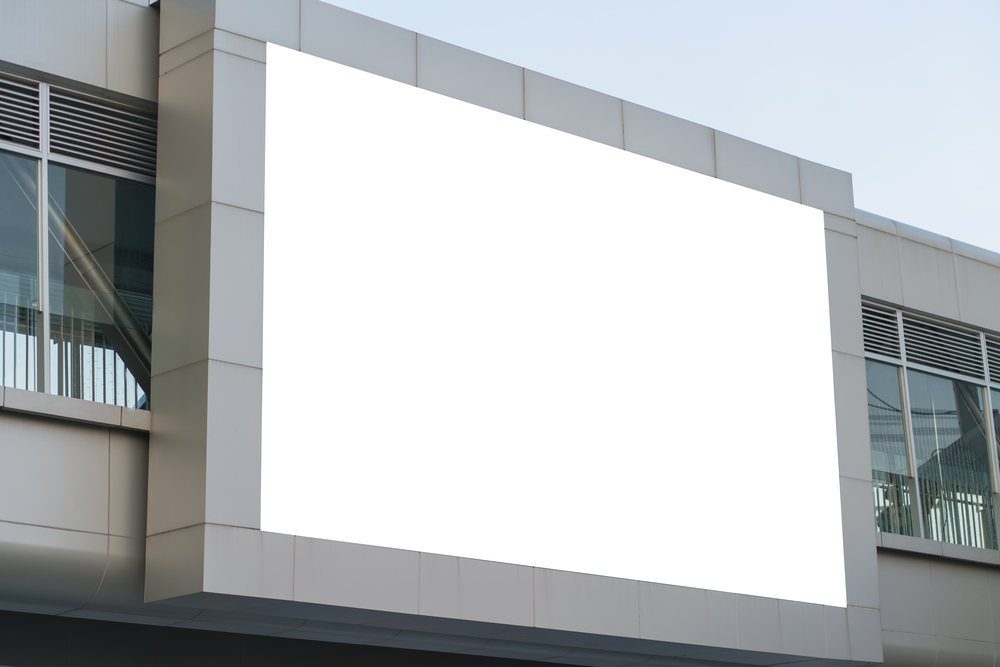
Posters have long been a staple in marketing, offering businesses an eye-catching and cost-effective way to communicate with their audience. Whether displayed in high-traffic areas, retail spaces, or online, a well-designed poster can grab attention, reinforce brand identity and drive customer engagement. Unlike digital ads that can be scrolled past in seconds, physical posters have a lasting presence, making them an excellent tool for promotions, events and awareness campaigns. They allow businesses to convey key messages creatively, using bold visuals and compelling copy to leave a strong impression on potential customers.
With so many styles and formats available, choosing the right type of poster is essential for maximising impact. From event posters to product promotions and infographics, each type serves a unique purpose and appeals to different audiences. Understanding the various poster types can help you tailor your marketing approach and ensure your message is delivered effectively. In this blog post, we will explore some common types of posters worth considering when promoting your business.

Infomercial posters are visually engaging and informative print materials created to promote products, services or ideas by combining persuasive marketing techniques with educational content. These posters typically use a mix of compelling images, bold headlines and detailed descriptions to capture attention and effectively convey key messages.
The content often includes step-by-step guides, testimonials or comparisons to highlight the benefits of a product or service. Infomercial posters are commonly placed in retail stores, trade shows, public spaces and educational settings to influence consumer behaviour or raise awareness on various topics.
Unlike standard advertisements, which focus primarily on brand recognition, infomercial posters aim to provide substantial information that helps consumers make informed decisions. These posters can range from showcasing new technological gadgets to spreading awareness about health and safety measures, ensuring that viewers receive both promotional and useful information in a single glance.
Key Points:

Formative posters are visual tools used in educational environments to facilitate engagement, reflection and a deeper understanding of a specific concept or topic. Created early in the learning process, these tools help capture key ideas and concepts. Whether designed by educators or students, formative posters aim to spark discussion, encourage brainstorming and guide learners through complex material.
The interactive nature of a formative poster allows for modifications as understanding develops over time. Displayed in classrooms or learning spaces, a formative poster serves as a reference and reminder of important learning goals. This tool plays a vital role in formative assessment by visually tracking the learning process, highlighting areas of growth and identifying concepts that may need further exploration.
Key Points:

Show posters, also known as cinematographic posters, serve as essential promotional tools for upcoming TV shows, theatre plays and musical concerts. These posters feature striking images or visuals directly associated with the event, giving potential audiences a glimpse of what to expect. The title of the show is prominently displayed for instant recognition, while other important details, such as the release date, venue and sometimes ticket information, are included to provide all the necessary facts.
The primary goal of show posters is to generate excitement and anticipation, effectively building momentum and creating buzz before the event. As a result, show posters play a vital role in the marketing strategy of the entertainment industry, helping to draw in crowds and keep audiences eager for the event’s debut.
Key Points:

Political advertisement posters, also known as propaganda posters, have a rich historical origin that dates back to the 19th century. Originally, these posters were used to raise awareness and gain public support for wars. Over time, the role of these posters expanded, and today are utilised by political parties, particularly during election campaigns, to communicate important messages about the parties, candidates and policies.
Political posters are a key tool for informing the public about the various parties contesting in elections. In addition to the political content, many contemporary posters feature footer advertisements from local businesses that sponsor the political parties. This reveals a close relationship between politics and local enterprises, showcasing the support and financial backing that businesses provide to political campaigns.
Key Points:

Fashion posters usually follow a simple, yet effective format that focuses on showcasing the featured fashion product alongside a model. These posters often highlight the product’s best qualities through a striking image, aiming to grab the viewer’s attention quickly. The brand name is prominently displayed, reinforcing its identity and association with the product. A catchy tagline is also included to make the poster memorable and communicate the essence of the product or brand in a few words.
Fashion posters are most commonly used by larger, well-established fashion brands to maintain their visibility in the market and strengthen their connection with consumers. By utilising strong visual appeal and concise messaging, these posters are designed to captivate the audience, keeping the brand in the public’s eye and helping to drive continued popularity and demand.
Key Points:

Corporate posters serve as a strategic tool used by large multinational corporations to promote the overall brand identity rather than focusing on individual products or services. These posters often feature a broad range of the company’s offerings, effectively communicating the full spectrum of products available while reinforcing the company’s brand image.
The primary objective of these posters is to strengthen the audience’s connection with the brand, cultivating a sense of recognition and trust. Corporations typically use a consistent design and layout in these posters, which ensures coherence across all marketing materials, helping to create a unified and professional brand presence. Although corporate posters may occasionally mention new product releases, their central focus is always on enhancing the overall brand rather than highlighting specific items or services.
Key Points:

Campaign posters are a series of promotional materials specifically designed to raise awareness for a particular cause or initiative, rather than promoting a brand or product. These materials are commonly used during awareness months like ‘Cancer Awareness Month’ and other similar health or social causes. The primary function of a campaign poster is to inform the public about the campaign’s goals and messages. By utilising bold visuals, informative text and striking designs, a campaign poster aims to educate individuals on the importance of the cause and encourage active participation.
In addition to raising awareness, businesses use campaign posters to engage their target audience effectively. Often, a campaign consists of multiple posters, with the first poster introducing the cause and providing essential information. Subsequent posters build on this foundation by offering more detailed insights into upcoming events or actions that the public can participate in. This series of interconnected posters forms a cohesive visual narrative, maintaining consistency and accessibility in delivering the campaign’s message throughout its duration.
Key Points:

Subject posters are designed to emphasise a single subject, which is typically the primary focus of the promotion. This type of poster is commonly used in art galleries to display individual works of art. In these instances, the poster features the artwork itself, often accompanied by a brief description that provides context or additional information about the piece. Similarly, in the music industry, subject posters are regularly used to highlight specific musical performers. These posters aim to draw attention to the artist or band, with visuals that represent their music or brand, paired with relevant details like concert dates or album information.
The purpose of subject posters is to create a clear and direct promotional tool that focuses on one key subject, whether it is a piece of art or a musical artist, making the promotional message focused and impactful.
Key Points:

Affirmative posters are designed to inspire, motivate and uplift individuals who view them. These posters typically feature motivational quotes or phrases intended to foster a sense of positivity, encouragement and empowerment. Often, businesses utilise these posters not just to spread optimism but also as a strategic marketing tool. By subtly incorporating their brand name or logo at the bottom or in the corner of the poster, companies can establish an association between their brand and the positive message being conveyed. This allows businesses to leave a lasting impression on their audience while contributing to a sense of well-being. Through this dual purpose, affirmative posters serve both a personal and professional function, creating a space where motivation and branding intersect.
Key Points:

The digital era has significantly transformed the marketing landscape, prompting businesses to embrace digital marketing strategies. A key innovation in this shift is the introduction of digital posters, which offer a dynamic alternative to traditional printed posters. Unlike printed posters, digital posters can be displayed using projectors or LED screens, offering businesses a versatile and engaging way to communicate with audiences. One of the standout benefits of digital posters is the ability to easily update content, which eliminates the need for frequent printing and reduces costs associated with changes in messaging.
Key Points:
In the dynamic world of business promotion, posters exemplify creativity and adaptability. From the traditional appeal of infomercial posters to the nuanced storytelling of formative posters, each type serves as a powerful communication tool. From highlighting events and advocating causes to setting fashion trends or offering inspirational messages, posters fulfil a broad range of promotional purposes.
Corporate posters offer a holistic view of a brand, while campaign posters mobilise communities for important issues. Subject posters zoom in on specific details and digital posters usher in an era of interactive engagement. Within this rich tapestry, businesses find the means to captivate, inspire and educate their audience, leaving a lasting impact.
The choice of poster type hinges on the campaign’s objectives, the target audience and the emotional connection a business aims to forge. By harnessing the potential of these diverse poster formats, businesses can not only promote their products and services but also cultivate a meaningful relationship with their customers. In a world inundated with messages, posters serve as beacons, guiding businesses towards effective communication and enduring connections in the competitive marketplace.
For a business, any form of advertising can be beneficial. Therefore, do not restrict your business promotion solely to digital marketing; consider embracing the traditional concept of poster printing to attract the extra attention your business needs.
Unlock 5%! Subscribe & Save
Copyright © Cheap as Prints 2025
We use cookies to enhance your experience. By continuing, you agree to our Privacy Policy.
Select which cookies you want to allow:
Save 5% on your order when you subsribe to our newsletter.